If you’re looking to roof your house yourself, a siding nailer is a must-have tool. But with all the different brands and models on the market, it can be tough to know which one is right for you. In this article, we’ll answer some of the most common questions about using a siding nailer for roofing, from product reviews to useful tips on how to get the best results. We’ll also recommend some of the top models on the market so that you can find the perfect tool for the job!
The Difference between Siding and Roofing Nailers
One of the most frequently asked questions we receive is whether a siding nailer may be used on a roof. The answer is yes! Siding and roofing nailers are actually very similar tools, with just a few key differences.
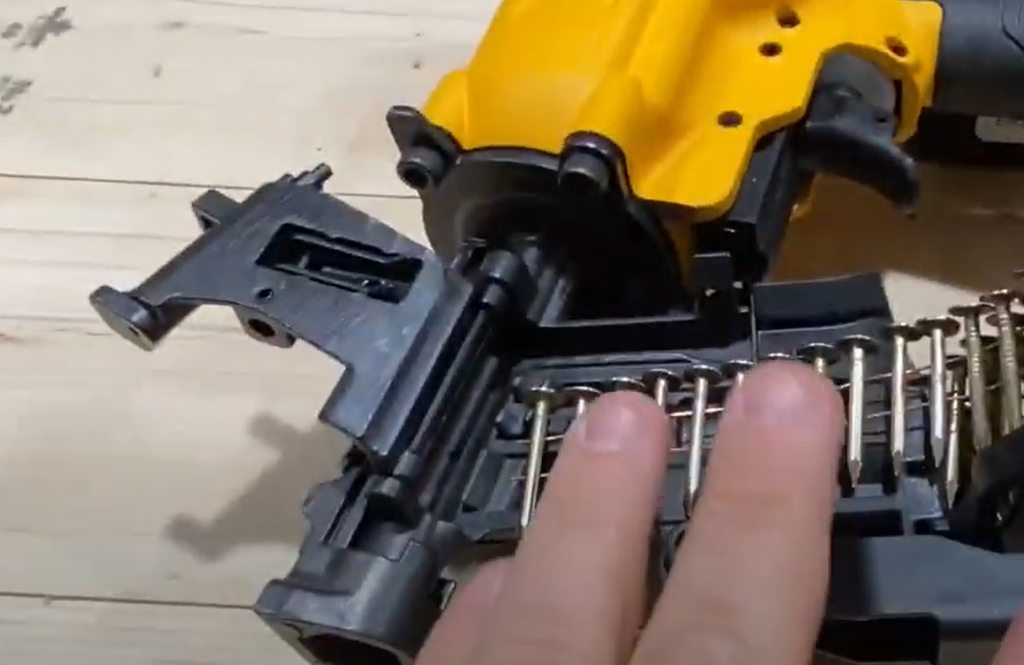
Siding nailers are designed to be used with thinner materials, such as vinyl siding or aluminum siding. Roofing nailers, on the other hand, are made for thicker materials like asphalt shingles or cedar shakes. That means that a siding nailer can be used for roofing projects, but a roofing nailer will be too powerful for most siding applications. [1]
There are several benefits to using a siding nailer for roofing, including:
- Speed and efficiency: A siding nailer can help you complete your roofing project quickly and efficiently.
- Precision: With a siding nailer, you can achieve precise results that are difficult to achieve with other tools.
- Less fatigue: Because a siding nailer is a power tool, it requires less effort to use than manual tools, which can help you avoid fatigue.
In addition to these benefits, using a siding nailer for roofing can also help you save time and money.
When it comes to choosing between a siding or roofing nailer, it really comes down to the material you’ll be working with. If you’re not sure, we recommend going with a siding nailer. They’re more versatile and can be used for a variety of applications. [2]
How Can Use Roofing Nailer For Siding
A Siding Nailer is a great tool for attaching siding to your home. It can be used to attach wood, metal, or vinyl siding. It is also great for roofing projects.
There are a few things to consider before using a Siding Nailer on a roof. First, you need to make sure that the surface you are attaching the siding to is clean and dry. If there is any moisture on the surface, it could cause the siding to warp or blister. Second, you need to make sure that the nails you use are the right size and type for the project you are working on.
Lastly, before you use it, make sure the Siding Nailer is correctly adjusted.This is especially important if you are using it for roofing projects. If the Siding Nailer is not properly calibrated, it could damage the shingles or metal roofing. Finally, you need to make sure that you follow all safety precautions when using a Siding Nailer. [3]
After reading this guide on how to use a siding nailer for roofing, be sure to take a look at our reviews of some top-rated products. We have reviewed products from top brands like Simpson Strong-Tie and DeWalt. We have also included a buyer’s guide to help you choose the best Siding Nailer for your needs.
Simpson Strong-Tie SNR-200K Review
The Simpson Strong-Tie SNR-200K is an excellent siding nailer for anyone who wants a durable and reliable product. It is made with durable materials and it comes with a one-year warranty. This siding nailer also has a magazine that can hold up to 200 nails. It has an adjustable depth of drive so you may fine-tune how deeply the nails pierce the siding. The SNR-200K also comes with an anti-jamming feature to ensure that nails do not get stuck in the magazine.
DeWalt DW66C-N-V20 Review
The DeWalt DW66C-N-V20 is another great choice for a siding nailer. With a three-year limited warranty and high-quality materials, this is a product you can feel good about using. This siding nailer has a large magazine that can hold 200 nails, so you can work for longer without having to reload as often.
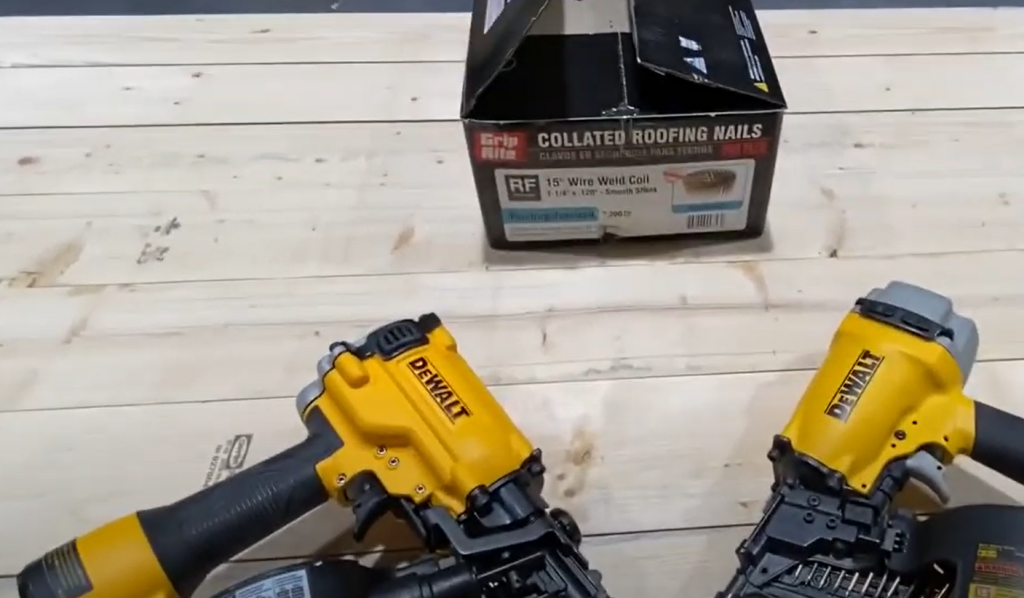
It features a depth of drive that may be adjusted to suit your needs. The DW66C-N-V20 includes a nail jam prevention mechanism that prevents nails from getting trapped in the magazine.
Hitachi NV45AB21S Review
The Hitachi NV45AB21S is an excellent siding nailer for anybody seeking one. Not only does this product come with a five-year warranty, but it is also made with high-quality and durable materials.With its adjustable depth of drive, you can control how deep the nails are driven into the siding. The NV45AB21S also has an anti-jam feature that prevents nails from becoming stuck in the magazine.
What Kind Of Nail Gun Do You Use For Siding?
A nail gun can be described as a pneumatic or an electric nail gun, depending on the type. Pneumatic nail guns use compressed air for power, while electric nail guns rely on electricity. Advantages and disadvantages exist for both types of nail guns.
Pneumatic nail guns are more powerful than electric nail guns and can shoot nails at a higher speed. However, they require an air compressor, which can be expensive to purchase or rent. Electric nail guns don’t have quite as much power behind them as pneumatic nail guns, but they don’t need an air compressor. [3]
Consult with a professional contractor or roofer if you’re not sure which sort of nail gun to utilize for your siding job. They’ll be able to advise you on the best type of nail gun for your needs.
When using a nail gun on siding, it’s important to choose the right size and type of nails. Ensure that the nails are sufficiently lengthy to go through the siding and into the sheathing below. Use galvanized or stainless steel nails to prevent rusting.
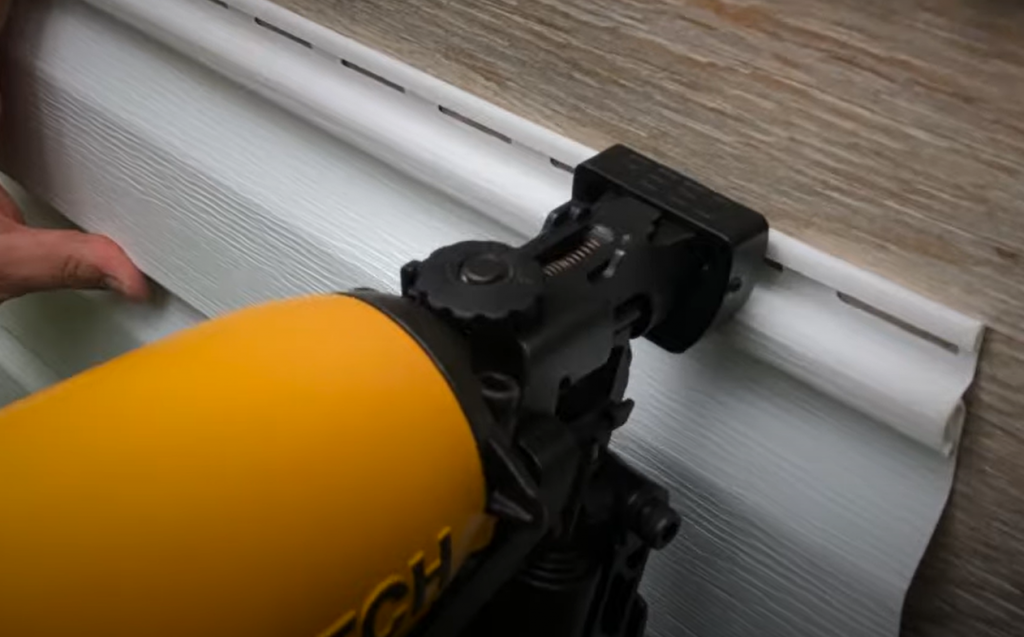
Be sure to read the manufacturer’s instructions carefully before using any power tools.
And always wear safety glasses to protect your eyes from flying debris.With these tips in mind, you’re ready to start using a siding nailer for your roofing project. Just be sure to choose the right type of nail gun and nails for your specific project, and follow all manufacturer’s instructions carefully. With a little bit of care and attention, you’ll be able to complete your roofing project quickly and easily. [4]
FAQ
Are siding nailers and roofing nailers the same?
No, siding nailers are designed for horizontal applications like attaching siding to your home, while roofing nailers are specifically designed for nailing shingles onto a roof. While you can use a siding nailer for roofing, it’s not recommended because the nails aren’t long enough and won’t penetrate through the shingles properly. Additionally, siding nailers have a magazine that holds the nails at an angle, while roofing nailers have a magazine that holds the nails horizontally. This is because when you’re nailing shingles onto a roof, you need to be able to shoot the nails in at a horizontal angle so they go into the sheathing beneath the shingles.
What can a siding nailer be used for?
A siding nailer is a tool that can be used for a variety of tasks, including:
- Roofing
- Siding installation
- Fencing
- Decking
- Trim work
- Flooring
Essentially, a siding nailer is a versatile tool that can be used for a wide range of projects. In this guide, we will focus on how to use a siding nailer for roofing.
Can you use a siding nailer for sheathing?
Yes, you can use a siding nailer for sheathing. The main difference between using a siding nailer and a roofing nailer is that the latter is specifically designed to be used with asphalt shingles. Siding nailers can also be used with other types of materials, such as wood and vinyl. When it comes to choosing a siding nailer for your project, there are a few things you need to keep in mind. First, make sure that the model you choose is compatible with the type of material you’ll be using. Second, consider the size of your project and choose a model accordingly. And finally, think about any additional features that might be useful, such as an air compressor or an adjustable depth control.
What kind of nail gun do roofers use?
There are two types of nail guns that roofers use: pneumatic and cordless. Pneumatic nail guns require an air compressor to operate, while cordless nail guns are battery-powered. Cordless nail guns are more expensive than pneumatic nail guns, but they’re also more convenient since you don’t have to lug around an air compressor. If you’re a DIYer, then a pneumatic nail gun is the way to go since it’s cheaper and easier to use. However, if you’re hiring a professional roofing contractor, they will most likely use a cordless nail gun since it’s more powerful and has less potential for user error. Pneumatic and cordless nail guns both have their pros and cons, so it’s really up to you which one you want to use.
Can I use a framing nailer to do roofing?
Yes, you can use a framing nailer to do roofing. However, there are some things to keep in mind. First, you will need to make sure that the nails you are using are the correct size and type for the job. Second, you will need to be careful not to overdrive the nails into the shingles. Third, you will need to be aware of the fact that a framing nailer is not designed for roofing and may void your warranty if something goes wrong.With that said, if you are experienced in using a framing nailer and feel comfortable doing so, then go ahead and give it a try. Just be sure to follow the tips above so that you don’t run into any problems.
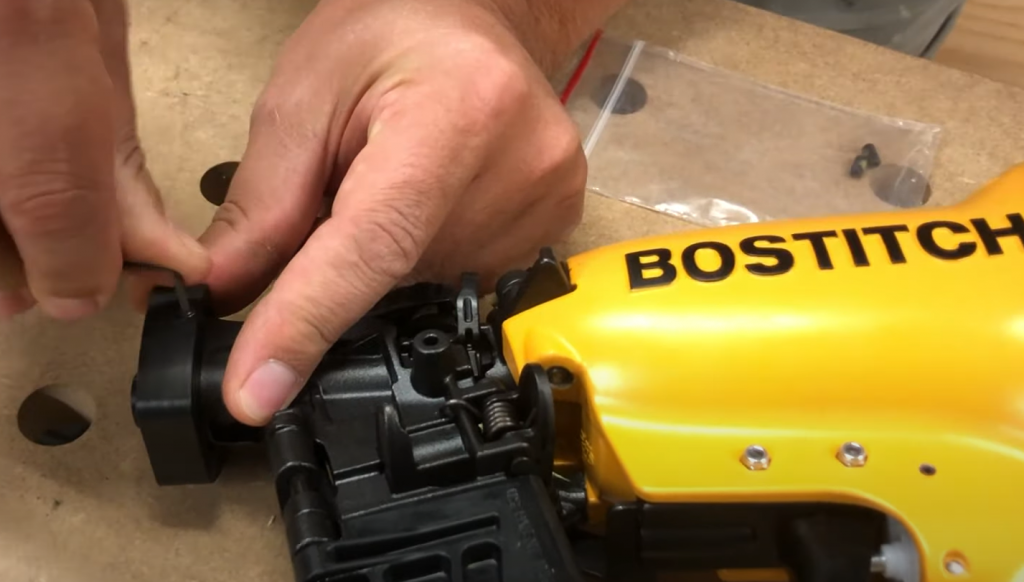
If you’re not experienced in using a framing nailer, or if you would simply feel more comfortable using a tool that is specifically designed for roofing, then you should consider getting a siding nailer. A siding nailer is very similar to a framing nailer, but it has a few key differences that make it better suited for roofing. First, siding nailers are designed to be used with thinner nails, so you won’t have to worry about overdriving them into the shingles. Second, siding nailers have deeper magazine wells, so you can load more nails at once and save time. Third, most siding nailers come with an adjustable depth of drive feature, which allows you to control how deep the nails are driven into the shingles. This is a great feature to have because it allows you to customize the depth of each nail to ensure that they are all driven in at the same level, which will help avoid any unevenness in your roof.
What kind of nails do you use for plywood sheathing?
There are a few different types of nails you can use for plywood sheathing, but the most common are ring shank and screw shank nails. Ring shank nails have a series of ridges or grooves around the nail’s border that enhance grip. Screw shank nails have threads running down the length of the nail that also help it grip the wood better.Both types of nails will work well for plywood sheathing, but screw shank nails will usually provide a stronger hold. If you’re unsure which type of nail to use, ask your local hardware store employee for advice.
What size nails are used for sheathing?
The most common size nails used for sheathing are eight-penny (0.131 inch diameter) and ten-penny (0.148 inch diameter). These sizes will also work with most other framing lumber applications such as trusses and roof decking. For thicker lumber, you may need to use a larger nail such as a twelve-penny (0.162 inch diameter).
When it comes to length, the most common sizes used for sheathing are two inches and three inches. For thicker lumber, you may need to use nails that are four inches or longer. Again, you can use shorter nails, but they may not have the holding power needed. Keep in mind that the size and type of nail you use will be determined by the application. Always follow the manufacturer’s recommendations for the best results.
Useful Video: Can you use a framing nailer for roofing
Conclusion
So, there you have it! Our complete guide to using a siding nailer for roofing. We hope you found this article helpful and that it has given you all the information you need to make an informed decision about whether or not using a siding nailer for roofing is the right choice for your project.
If you have any questions or comments, please feel free to leave them below and we will be happy to answer them. Thank you for reading and good luck with your project!
References:
- https://www.roofcalc.com/can-you-use-siding-nails-in-a-roofing-nailer/
- https://storiesofahouse.com/can-you-use-a-roofing-nailer-for-siding/
- https://www.finepowertools.com/nailers/roofing-vs-framing-vs-siding/
- https://thetoolstrunk.com/can-you-use-roofing-nailer-for-siding/
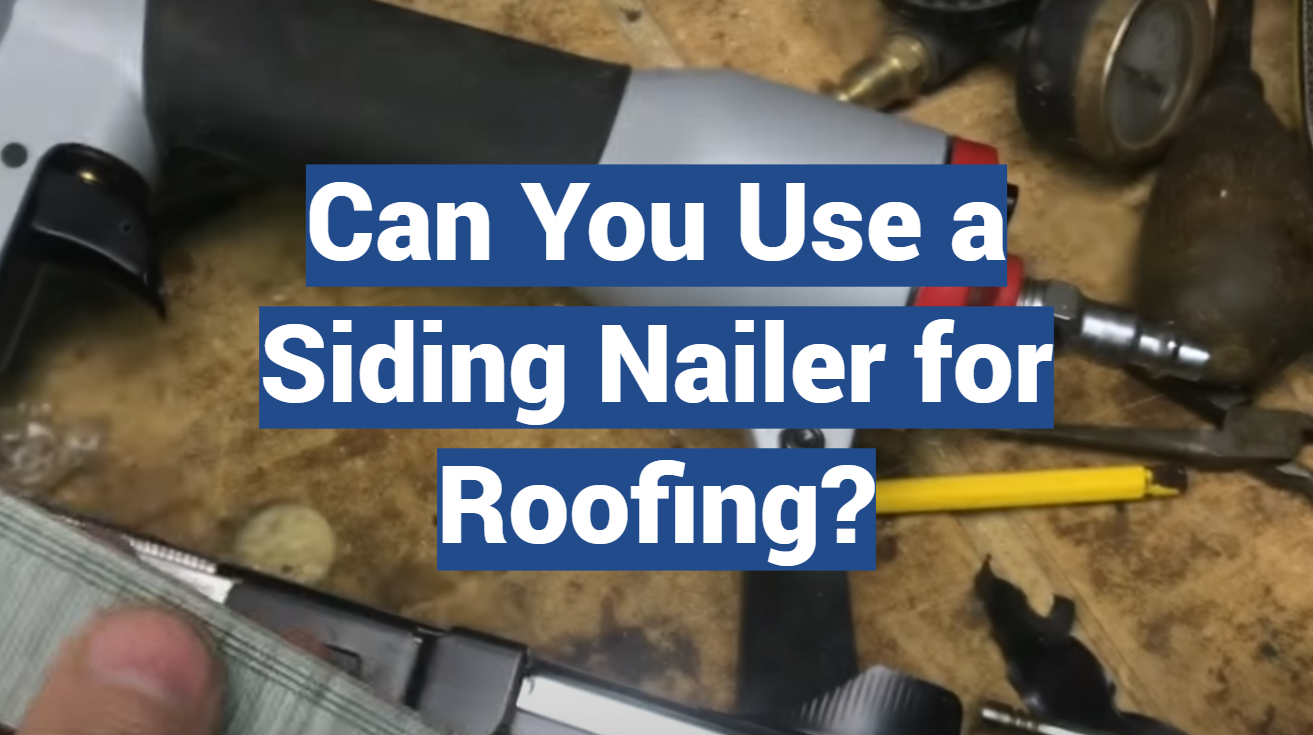


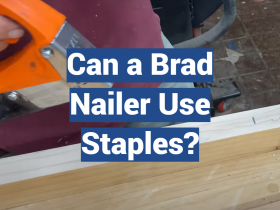
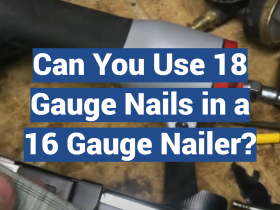
Leave a Reply